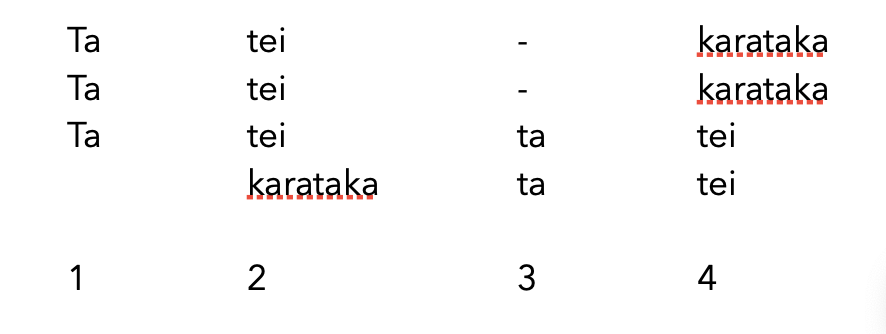
Classical Indian Odissi dance is sculpture-like, meaningful and religious, but also highly rhythmical. We, as dancers, have to learn each step, and at the same time we learn how to sing it. This is why the topic of this post is going to explain what is a “Bol” Indian classical music
In this dance video you will see an extract of a choreography called “Moksha”, which is a final piece of the classical Odissi repertoire. It represents the ultimate deliverance of the life and death wheel in the Hinduist philosophy. Pay attention to the music, see if you find it special, and then continue reading 😉
I hope you liked it! I wanted to take this choreography to point out the meticulous work the dancer has to do, in order to carry out a precisely and technically performed dance together with the Bol, the syllables narrated by the drum. In this occasion, it is myself singing, accompanying my dance with my voice. But, what is a Bol?
It should not be confused with the Western musical scale:
C D E F G A B C
We learned this scale in basic music at school, right? Well, the Indian classical music scale looks like this:
SA RE GA MA PA DA NI SA
As you can see, they both start and finish with the same syllable. Although the syllables are not the same, their function actually is the same, to sing in tune. This wouldn’t be a Bol.
However, we are not talking about musical notes, but about RHYTHM.
They shouldn’t be confused with the rhythmic figures neither, the ones we know as minim, crotchet and quaver. A Bol is not just a rhythmic score, since it doesn’t define only the beats, there is a lot more.
A Bol is a syllable sequence narrated by the drum and the drummer, providing information about the sound (where the drummer bangs the drum), the rhythm and its subsections and the dynamics (piano and forte).
In classical Indian dance we learn each choreography’s Bol, since it is considered to be the movement sequence map of the piece we are dancing. Therefore, the Bol marks our movements.
In addition, we perform the sounds, whether strong, sharp, heel or sole strikes, with the gunguroos (bells), which are tied to our ancles, bringing to completion and embellishing the choreography with this beautiful sound.
Each choreography has its own Bol, and in this case, you’ve seen and heard Moksha choreography’s Bol.
You can check out an excerpt of a Bol reading right here:

This is just a beginning of a holistic journey through movement, that brings together this meaningful, religious, sculpture-like dance.
Thank you for your interest! Don’t forget that you can study with me on my ONLINE CLASSROOM.
For three days, my entire online platform will be 25% OFF, so you can freely choose any course, style or practice you wish to explore.
What’s included:
Perfect for dancers who want to choose their own path.